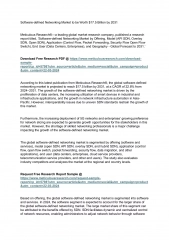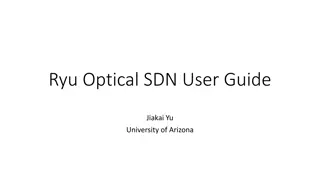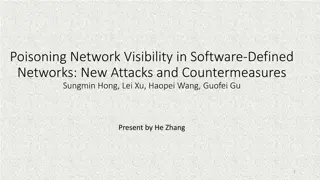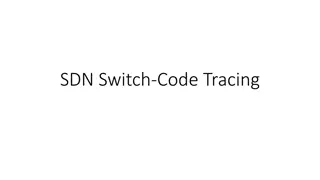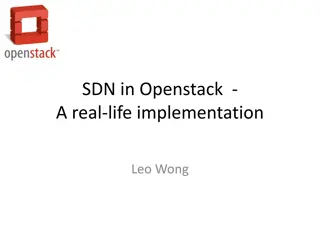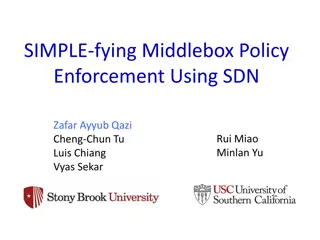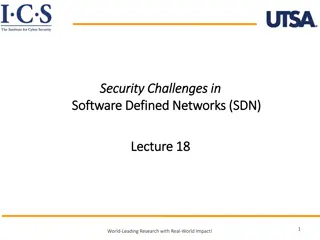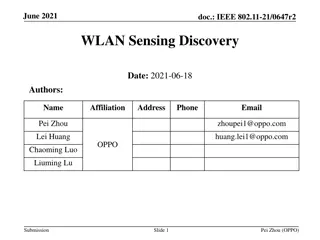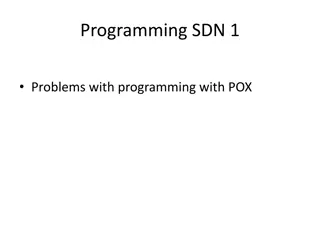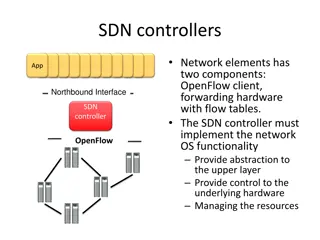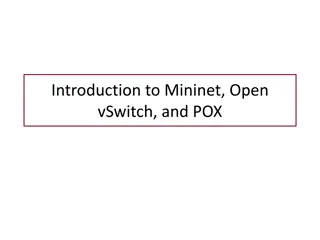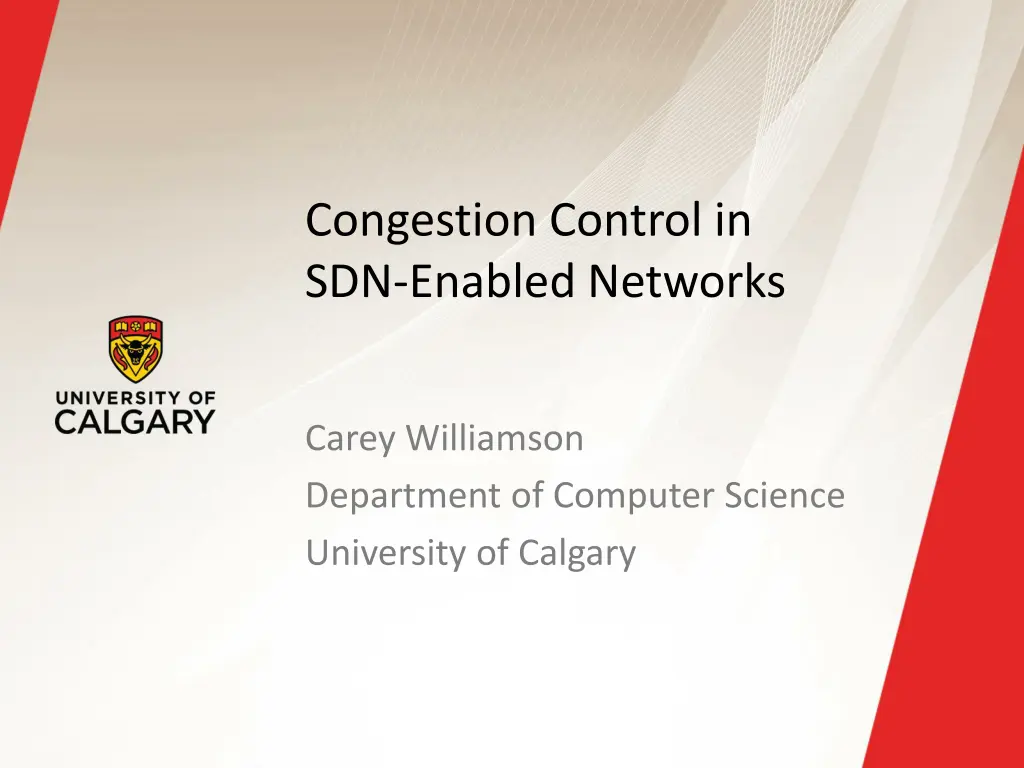
SDN-Enabled Network Congestion Control for High-Bandwidth Applications
Explore how Software-Defined Networking (SDN) can effectively manage congestion for high-bandwidth applications like interactive video and cloud gaming. Learn about the proposed solutions, system architecture, network state information exposure, and control algorithms for responsive congestion control in SDN-enabled networks.
Download Presentation

Please find below an Image/Link to download the presentation.
The content on the website is provided AS IS for your information and personal use only. It may not be sold, licensed, or shared on other websites without obtaining consent from the author. If you encounter any issues during the download, it is possible that the publisher has removed the file from their server.
You are allowed to download the files provided on this website for personal or commercial use, subject to the condition that they are used lawfully. All files are the property of their respective owners.
The content on the website is provided AS IS for your information and personal use only. It may not be sold, licensed, or shared on other websites without obtaining consent from the author.
E N D
Presentation Transcript
Congestion Control in SDN-Enabled Networks Carey Williamson Department of Computer Science University of Calgary
Introduction and Motivation There is a new emerging suite of high-bandwidth Internet apps based on interactive video Example 1: 360-degree video Example 2: Cloud-based gaming services Example 3: JPEG 2000 Interactive Protocol (JPIP) Challenges: High bandwidth requirements for interactive video Latency sensitivity for remote user interactions Need to support multiple service classes Overhead of resource reservation mechanisms Limited effectiveness of end-to-end congestion control
This Paper Research Question: Can SDN provide effective and responsive congestion control for these applications? Answer: Yes! Proposed Solution: Network-exposed API for network state visibility SDN-assisted congestion control with low latency, high bw Fair sharing between interactive and non-interactive flows Extensive evaluation of effectiveness and scalability A. Naman, Y. Wang, H. Gharakheilia, V. Sivaraman, and D. Taubman, Responsive High Throughput Congestion Control for Interactive Applications over SDN-Enabled Networks , Computer Networks, April 2018.
Exposing Network State Information RESTful API (HTTP-based) Registration required by interactive flows Network query response protocol for state info Request format: GET /stats/<MyIP>/<PeerIP>/<LastIdx>/<MaxEntr>/ Response format: Network state entries: [ns entry1; ns entry2; ] Link state entries: [i, L, link_entry1, link_entry2, ] Information and format: [delta_i, b_i, q_i, R_i, d_i]
Control Algorithm Two queues: interactive and non-interactive Dynamic estimation of number of bytes queued at the bottleneck point on an end-to-end path Try to limit this queue size for interactive traffic Formulas derived for control-theoretic dynamics Analogous to Rate-Delay (RD) Network Services by M. Podlesny and S. Gorinsky, ACM SIGCOMM 2008
Experimental Evaluation Experimental setup with Mininet
Experimental Results (1 of 12) Figure 3: Average Bandwidth (Mbps) versus Time
Experimental Results (2 of 12) Figure 4: Bottleneck Queue Size (bytes) vs Time
Experimental Results (3 of 12) Figure 5: Video Quality (PSNR) versus Time (frames)
Experimental Results (4 of 12) Figure 6: Multiple Flows
Experimental Results (5 of 12) Figure 7: Bandwidth and Queued Bytes vs Time
Experimental Results (6 of 12) Figure 8: (a) Throughput vs Time (b) RTT vs Time (c) PSNR vs Time
Experimental Results (7 of 12) Figure 9: (a) Num Flows vs Time (b) Available Bandwidth vs Time (c) Throughput vs Time
Experimental Results (8 of 12) Figure 10: (a) RTT vs Time (b) Avg Queued Bytes vs Time (c) PSNR vs Time
Experimental Results (9 of 12) Figure 12: Bandwidth and Queued Bytes vs Time
Experimental Results (10 of 12) Figure 13: (a) Bandwidth vs Time (b) Queued Bytes at P1 (c) Queued Bytes at P2
Experimental Results (11 of 12) Figure 14: (a) Bandwidth vs Time (b) Queued Bytes at P1 (c) Queued Bytes at P2
Experimental Results (12 of 12) Figure 15: (a) Bandwidth vs Time (b) Queued Bytes at P1 (c) Queued Bytes at P2
Conclusions SDN-assisted congestion control can provide the responsiveness needed for interactive video apps Key idea is to expose and exploit network state info Experimental results show that the proposed approach is responsive and fair, even in the presence of highly dynamic network flows Future work: More efficient protocols for streaming network state info More effective solutions for high-latency federated networks

